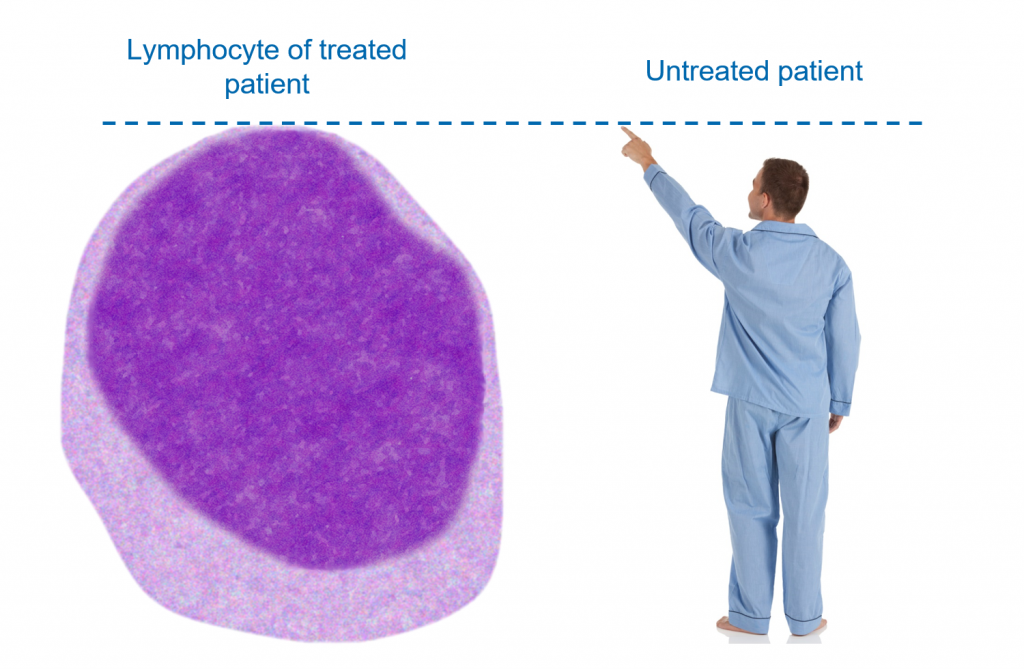What is wrong with this sentence?
The lymphocytes of treated patients were larger than untreated patients.
Actually, there’s nothing wrong with it, … that is if you’re describing the situation in this picture.

Of course, it is unlikely that this is what you mean. Most likely, what you intend to do is to compare treated patients and untreated patients in terms of the size of their lymphocytes. So, how do we express this correctly in English?
Let’s start by writing out the full comparison:
The lymphocytes of treated patients were larger than the lymphocytes of untreated patients.
We can then shorten this to:
The lymphocytes of treated patients were larger than those of untreated patients.
The underlined parts indicate what we are comparing. It is clear that ‘those’ is needed in the last sentence to make sure the comparison is made between likes, and we’re not comparing lymphocytes with patients.
So far, it all seems straightforward. It can get a bit confusing, however, because there is another way of expressing the same comparison:
The lymphocytes were larger in treated patients than in untreated patients.
Note that in this construction it would be a mistake to add ‘those’. Non-native English speaking authors, however, commonly make this mistake, confusing this construction with the first one, in which ‘those’ is needed.
Just remember the following two constructions:
A of X was larger than that of Y A was larger in X than in Y
When you have a long complex sentence, it can be a bit confusing to determine which of the two constructions you’re dealing with. It helps to identify the parts that correspond to the underlined parts above, and then determine whether ‘that’ or ‘those’ is necessary or not.
Comparing lymphocytes and patients © 2025 by Raoul Breugelmans is licensed under CC BY-ND 4.0
